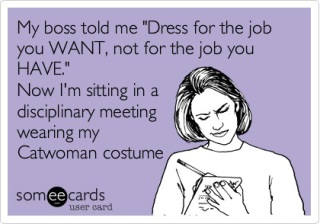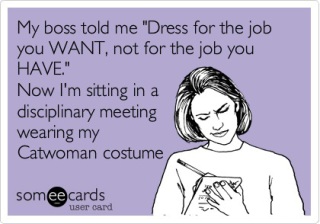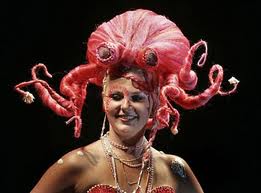Dress for the job you want, not the job you have. This adage is commonly used in reference to the business sector, but maintaining a professional and appropriate image is as applicable in EMS as on Wall Street. People may not be investing their money in our bank, but they are investing a treasure that is greater than any monetary fund, they are entrusting us with their lives or those of their loved ones. According to research by Harvard Medical School and Massachusetts General Hospital, people assess your competence and trustworthiness in a quarter of a second based exclusively on how you look. You haven’t even made it up the sidewalk to the patient and they already know what they think of you and how you will care for them. Patients are not the only people we encounter that are making judgments based on what we look like. Bosses, nurses, doctors, police officers, firefighters, politicians, and every citizen on the street are looking at you, how you act and what you are wearing. If you look like a mess, your organization looks like a mess. Being mindful and aware of your appearance not only benefits your personal career, it benefits the advancement of EMS as a whole.
When I was a “new guy” I will admit I was quite a hellion. Of course, you can’t properly raise hell without looking the part. Short red hair with a white stripe in the front and shaved to the skin in the back, ears full of hoops (definitely more than four) and of course Doc Martins. Begrudgingly I wore my super-hot and absolutely uncomfortable, polyester, French blue shirt and navy pants with matching stripe. You can imagine my poor partners’ horror every day they had to work with me, “that guy.” Not because I couldn’t lift or was a poor clinician, but I made THEM look bad because we were associated by the uniform. I didn’t get much respect from the old timers and surely not from nurses and doctors that I just met. Time went on and my unique hairstyles evolved. In the late 1990s there was a popular hairstyle that was long and straight in the back with “sprockets” or multiple twists that looked like battery coils at the crown. Yes, I was enamored and loved to wear this style all-the-time. One day at work our most infamous homeless guy called the ambulance, for the fourth time in six hours to go back to the hospital he just left. A discussion turned into a rather heated debate with a police officer about what to do in the situation since taking this gentleman back to the hospital was not really what he wanted (that would be food and a cool place to sleep). The police officer commented on my silly hairstyle during this argument. The officer had deduced that I had no real responsibilities in life and had no liability to be concerned about when making patient care decisions because I wore unprofessional hairstyles to work. I am just thankful no one has a photo. If you do have one, please burn it.
When you put on your uniform, you are no longer your own unique individual. Yes, you bring you and all your gifts and attributes to work, but the uniform signifies your representation of an organization of unified practitioners. You can be unique and as fancy or silly or slovenly as you want to be on your own time. When you are at work, you are not you, you are the job. Uniforms are not all bad. They can inspire authority, not only in patients’ eyes, but within our psyche as well. On EMTLife.com, Adamjh3 states, “I’m way more confident in my uniform than I am normally, it’s like I’m a whole different person.” Uniforms can inspire unity between employees, assisting in producing a team environment. They also help others identify what role you play if they need assistance. Uniforms can offer safety via blood borne pathogen or fire protection within the garments. Most of the common complaints I have noted in reference to a uniform appearance for EMS workers deal with how the practitioner is wearing the garments or their appearance while in uniform.
Some commonly noted uniform faux pas are:
Wrinkled uniforms: I recently attended a funeral for a fellow EMT. One of the mourners, also an EMT, had on a uniform shirt that looked like he pulled it out of the bottom of the hamper. On a regular day that is awful, at a funeral it was disrespectful and disgusting. Iron your stuff, or at least throw it in the dryer (I won’t tell).
Dirty Uniforms: Some of us wear light blue or white shirts and dirt from various sources finds its way right to the front of the shirt for everyone to see, it is part of the job. If your shirt is grey or brown and it wasn’t that color when it was issued, please wash your uniform. I won’t mention all the other things living on a dirty uniform, you can imagine on your own.
Ill-fitting uniforms:Too big and too small look equally bad. All your parts should be covered without looking like you borrowed your Dad’s clothes.
Shirt tails: Tuck your shirt in! This was the big winner when I asked providers for their feedback on their biggest uniform peeve. This one thing can instantly make you look slovenly and lazy.
Wear a t-shirt: In addition to having an extra layer of protection against the gross things our uniform shirts attract, a t-shirt makes what is under your uniform shirt opaque and protects you from wardrobe malfunctions. As a new EMT rebelling against my unfashionable uniform, I did not wear a t-shirt. One day while driving back to headquarters I looked down to find my shirt wide open! Three buttons “malfunctioned” and all I could think about was how to button my shirt without my partner noticing. Thankfully, he was a gentleman and made up an excuse about going to the corner store and left me to fix my shirt in peace. Guys, this goes for you, too! No one wants to see your Magnum PI chest hair through your shirt. White, navy or black are typical colors that compliment most uniforms, but of course wear what your organization’s SOPs direct.
Hair: Since my days of rebellion via coif I have been reformed and now stick to either blond or red that could occur via nature. My professional life has improved greatly. Yours can, too. Men, keep your hair cut or styled (the ladies like it, too). Shave your face if it looks bad and follow your organization’s SOPs for facial hair. Ladies, if you have long hair or loose where it could get into bodily fluids that aren’t yours (yes that happened) please secure it. This is a blood borne pathogens issue and a security issue. If you are attacked by someone your beautiful hair can be used as a weapon against you.
Piercings and jewelry: No, you should not wear your septum piercing and Marilyn Manson gauges to work. Granny may have a conniption and the goal is to not upset your patient any more than they already are. In reality all jewelry should be avoided for safety and security reasons, someone can attack you and rip out your piercings, use a necklace to choke you; your rings can get caught on many items in your truck or on a scene. Everyone wants to go home at night with all their parts intact.
Accessories: Please wear a belt. A belt can hold your radio and many other doodads you may need at work. A belt can also help with that pesky shirt tail that won’t stay tucked in or pants that are a little too large. If you note that your boots are looking scuffed, dirty or broken down, please clean and polish them or replace them. The lady with the white carpet does not care that you were at a cow pasture last week; you are not getting into her house with those boots.
We do a job that requires exertion at times and yes, we sweat and that can be quite fragrant. You should not be malodorous BEFORE your shift. Good hygiene benefits your partner and your patients who will be in close quarters with you and your aroma at some point. It benefits you as well since you don’t want to be “that guy” no one wants to work with. Clean, neat hands are important in our profession since they are our tools to administer treatment to patients. Not only can they carry disease, but like our uniform they demonstrate our attention to detail. No one wants to be touched by grubby hands, even when enclosed in gloves.
I recently attended a seminar at a prestigious university where a speaking coach was discussing how to have your message heard. The very first thing she talked about was visual presentation. People make their decision about whether or not you are worth listening to within milliseconds. That may not seem “fair”, but it is what we have to work with when attempting to deliver our message and treat our patients. In our business our message can affect our own or others’ lives, what message could be more important?




Leave a comment